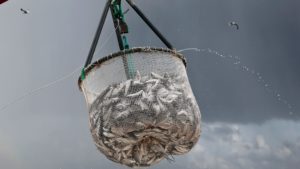
Sometime soon, American eaters may be able to purchase tuna labeled with a QR code that can be scanned to reveal when and where the fish was caught, and by whom. This new blockchain project aims to prove that a completely transparent, traceable seafood supply chain is possible, and can curb misdeeds on the high seas. by Jessica McKenzie
From overfishing to species mislabeling to slavery, the seafood industry is rife with dilemmas and abuses. Navigating the fish counter is an eater’s nightmare. Conscientious shoppers can download a guide to sustainable seafood published by the Monterey Bay Aquarium’s Seafood Watch program, but the publication assumes that restaurants, distributors, and suppliers behave honestly and can be taken at their word. Evidence points to the contrary: In 2013, the non-profit organization Oceana conducted genetic tests on fish samples from cities across the country, including Austin, Chicago, New York, and Washington, D.C., and found that 59 percent of the fish sold as “tuna” at restaurants and grocery stores was mislabeled.